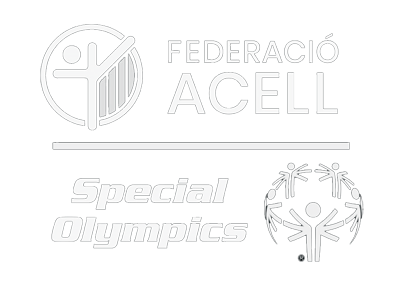This connection is very alive. The team celebrates its highest achievements at the Plaça de la Vila de Gràcia. The flags that are publicly displayed at Europa are those of the club itself, Catalonia, and Gràcia, while the flags of our club that are hanging from balconies in the city are almost always balconies in Gràcia. A fan club of Europa refers to Gràcia: Caliu Gracienc. Also, Europa participates in local festivities, such as the celebrations of Sant Medir. And last but definitely not least, the Nou Sardenya stadium is located in Gràcia. Enough reasons to prove the link between the club and the former town.
However, there are both historical and cultural dynamics that broaden Europa’s sociology. The whole panorama also includes other parts of Barcelona. For starters, there is the stadium history of Europa. 11 different fields have been regarded as ‘home’ by the club, spread over six Barcelona neighborhoods: the Camp de l’Arpa del Clot (1 stadium), El Poblet (3), the Camp d’En Grassot (1), the Baix Guinardó (1), Vilapicina (1), and the Vila de Gràcia (3). Some of these neighborhoods never established any emotional connection to Europa, such as the Camp de l’Arpa del Clot, while others achieved the opposite, most prominently the Vila de Gràcia. Other neighborhoods, concretely El Poblet, the Camp d’En Grassot, and the Baix Guinardó, may not be known as the most europeista neighborhoods, but they do have some sympathizing sentiments toward the club. Especially El Poblet, the area where Europa was founded in 1907 and where the club played for years (1909-1920), is a zone with many supporters of our club.
A map of all the stadiums that have been our club’s home, as well as the place where Europa was founded.
1 = Camp del Carrer d'Indústria (1907-1909)
2 = Camp de la Sagrada Família (1909-1912)
3 = Camp de la Sagrada Família (1912-1917)
4 = Camp del Carrer de la Marina (1917-1920)
5 = Camp del Carrer de Sicília (1920-1923)
6 = Camp del Guinardó (1923-1932)
7 = Camp dels Quinze (1932-1935)
8 = Camp del Carrer de la Providència (1935-1939)
9 = Camp de Sardenya/Nou Sardenya (1940-1992 & 1995-present)
F = The place where Europa was founded (1907).
Two major reasons caused this difference in connection to Europa between these neighborhoods. The first one is the most logical one: location. El Poblet, the Camp d’En Grassot, and the Baix Guinardó form or border Gràcia. The Camp de l’Arpa del Clot is a part of the further away Sant Martí de Provençals, just like Vilapicina belongs to Horta. Proximity makes it easier for families who live around the stadium to join Europa’s youth academy, for example, or for new football fans to go to a match.
The second reason ties into the first one. In some parts of Barcelona, Europa is actively promoting itself or is involved in local events. The areas where the club is active are the ones around the stadium, including the three earlier-mentioned neighborhoods. For example, these are the neighborhoods where our club’s monthly newspaper, L’Eskapvlat, is distributed or where pre-match posters can be found. Besides, Europa has been organizing youth tournaments in El Poblet for years and joined the ‘Citizen’s Platform for a Sports Center in the Baix Guinardó’ in 2019. All in all, Europa’s sociology can not be limited to Gràcia, even though it’s the zone that is most present in Europa’s identity. Both the past and the present prove that our club has spread its passion to different parts of Barcelona.









